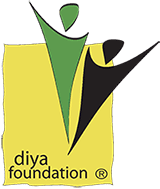Prader Willi syndrome
Prader-Willi syndrome – what, causes, early signs, what affects – best practices to work them.
Prader Willi Syndrome, also known as PWS is a genetic disorder that affects the mental, physical and behavioural states of a person. It’s genetic in nature and quite rare, although it’s important to note that these genetic errors are random and, in most cases, not inherited. Roughly, about 350,00 to 400,000 people are affected by PWS (Butler et al.) Scientific research has yet to pinpoint the exact cause of defect in PWS but have a fairly rough idea about the location of the problem; chromosome 15. It is found that many individuals with PWS have two maternal chromosome 15s.
There are certain characteristics of PWS that visibly stick out in such a way, that it becomes apparent that the child is physically different in some respect. Some babies show signs of poor muscle tone that results in a lanky and droopy posture due to floppy legs and elbows. In certain cases, it is also, quite common for the baby to have distinctive facial features and poor responsiveness to any sort of touch. One of the most common deficits are in the reproductive organs of the baby, parts of which can be smaller than normal for all genders.
During the time period between early childhood and adulthood, a rise in cravings and hunger is observed which translates in the form of an unusual weight gain. Puberty in these children is one of the most crucial periods, marked with hypogonadism, wherein, the child has underdeveloped genitals and the production of sex hormones is almost negligible. This leads to infertility in most cases with the women having a late onset of menstruation and men having shrill voices and little to no facial hair development. The overall physique of a child is also an integral determinant in the diagnosis of PWS since children with PWS seem to not grow in terms of their height and thus have a short yet bulging body mass due to high body fat.
In terms of cognitive and psychological development of the child, there is evident learning disability that mostly translates into intellectual disabilities in the child. The speed at which certain developmental milestones are to be reached is also slow, for example: learning how to sit or stand. The verbal development is observed to have deficits in speech and articulation of words as well. OCD and anxiety are some of the disorders that might also manifest themselves in the child at a later age.
The behaviour of these children is strikingly aggressive and at times, manipulative. Taking “no” for an answer is out of the question for them and this results in temper tantrums and petty fights. Children also have issues with adapting to new environments and changes to their schedules and can deal with several sleep disorders such as sleep apnea.
Apart from medicative therapies and treatments, certain lifestyle choices can definitely increase the quality of life and reduce the comorbidities that present themselves as a result of incorrect maintenance of this condition. One way of doing this is by increasing the daily level of exertion in the child, in order to reduce the speed of weight gain and other health deficits. Another way of ensuring this is by setting a meal plan for the child and following through with it, making sure that the child is getting the required nutrients like proteins, carbohydrates, vitamins and minerals and not harmful foods that contain processed fats. This can be done and implemented in various ways by having the child get a reward for following the meal plan and serving the food in smaller plates. To deal with the behavioural problems, child psychologists and psychotherapists can be consulted, who will be able to find remedies to these problems and boost the child’s mood. It is also extremely crucial for the parents to ensure that they frequently take their child to the doctor to get assessments and check-ups done. This will make the parents aware of the child’s health and also set their minds at ease. Overall, it’s the collective responsibility of the guardians of the child to ensure that a loving, supportive, guilt-free and safe environment is provided to the child to grow and develop holistically in life.
Butler MG, Hanchett JM, Thompson T. Clinical findings and natural history of Prader-Willi syndrome. In: Management of Prader-willi Syndrome, Butler MG, Lee PDK, Whitman BY (Eds), Springer, New York 2006.
https://www.mayoclinic.org/diseases-conditions/prader-willi-syndrome/symptoms-causes/syc-20355997.
https://www.mayoclinic.org/diseases-conditions/prader-willi-syndrome/diagnosis-treatment/drc-20356002
-Ms. Dhruvika Sharma
BA (hons.) Applied Psychology,
Amity University, Nodia

